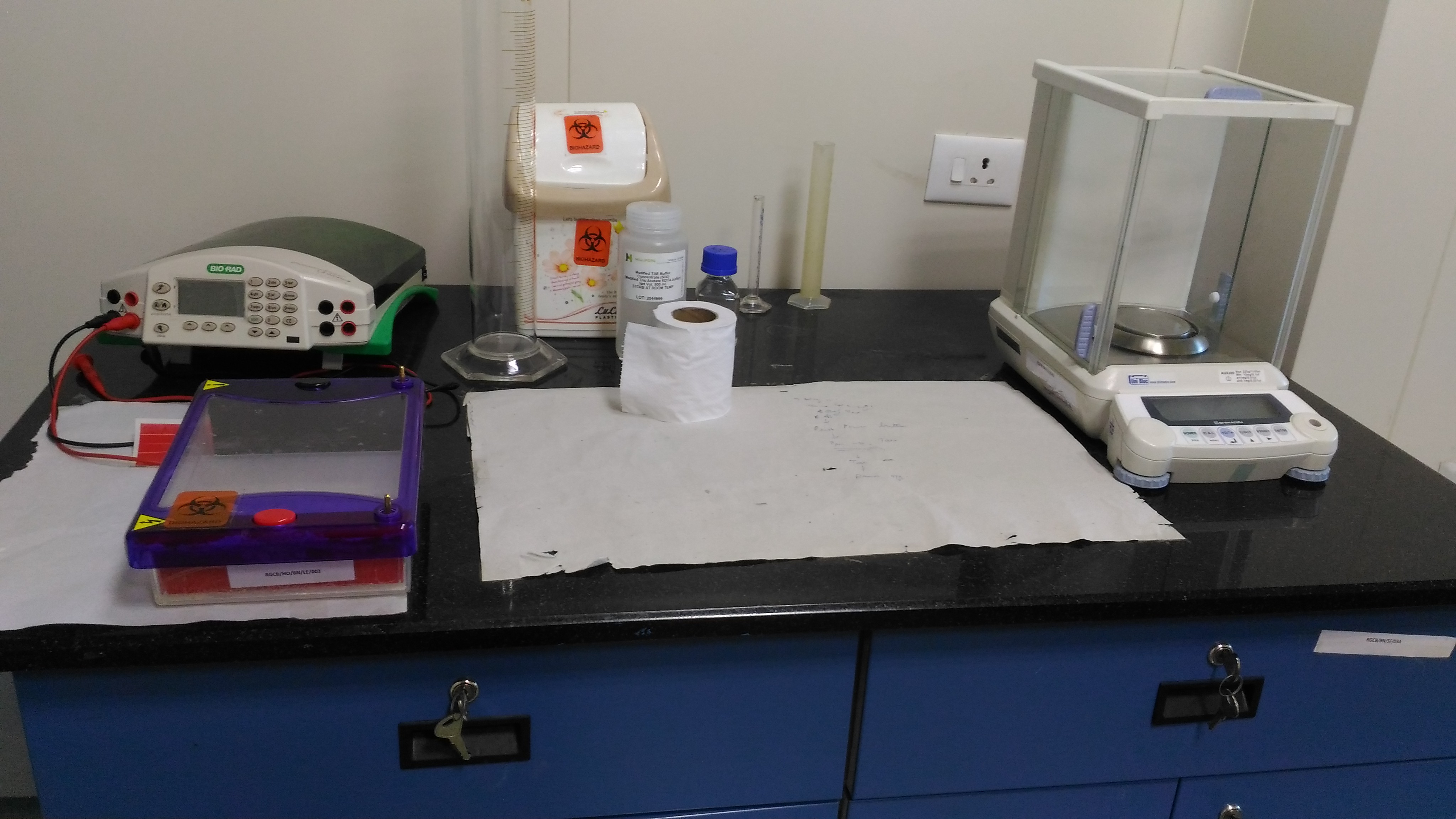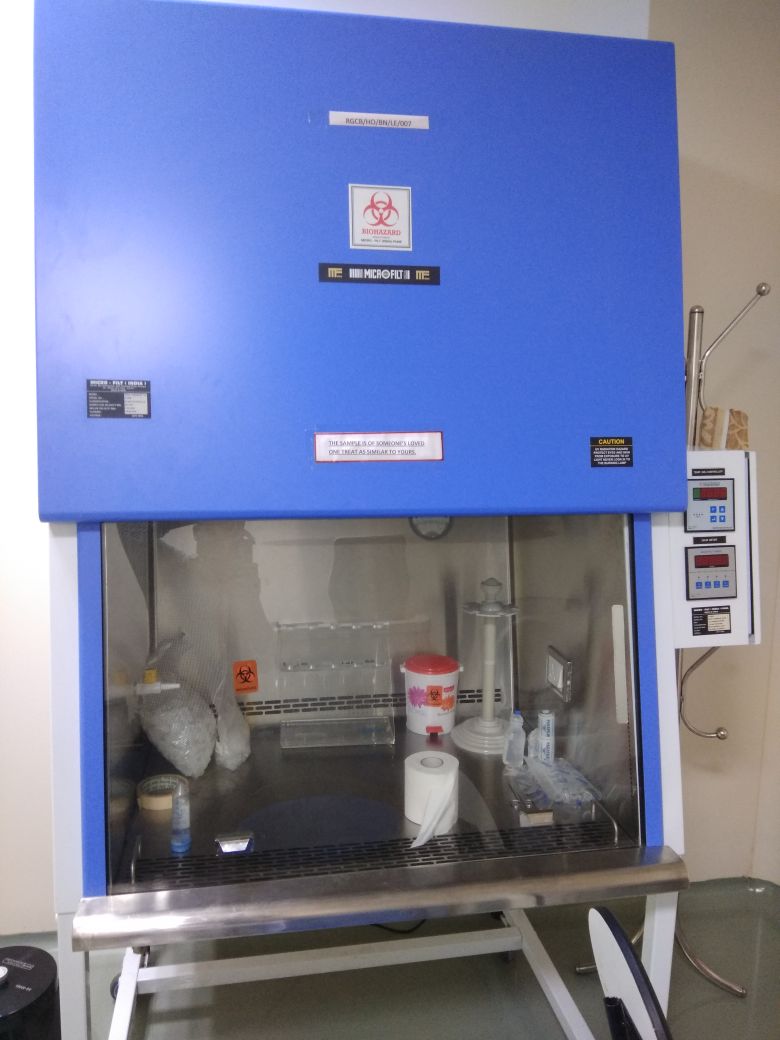The laboratory we are going to work with during the Bio-Academy Program is KRIBS at Cochin, a Biotechnology Incubator space with well equipped laboratories supported by Rajiv Gandhi Centre for Biotechnology in Kerala. The safety level of our lab has both BSL1 and BSL2.
The biochemicals that are not very contaminating are worked in openbenches. , For working with bacteria, fungi, viral vectors and biological toxins, the Biosafety cabinet is used. Fume hoods are used for working with exploding chemicals, which generates fumes.


I have received the basic training on how to deal with harmful chemicals during my graduate studies at SASTRA University. When I was selected as a Summer Research Fellow by Indian Academy of Sciences, I underwent a training on how to use the Biosafety Cabinet (BSL2) for handling bacterial cultures. I have also attended an online lecture conducted by the National Biosafety and Biocontainment Training Program, National Institutes of Health and Dartmouth College on safety measures to be taken in BSL2 and on Autoclaving. In future, I will undergo training on both BSL3 and BSL4 too.
The guidelines for Good clinical practices developed by Indian council for Medical Research is applied nationally to all the laboratories who are working in biology such as Microbiology, Molecular Biology, Biochemistry and Clinical Diagnostics. The implementation of biosafety procedures, rules and guidelines under Environment (Protection) Act 1986 and Rules 1989 in the Department of Biotechnology (DBT- India) ensures safety from the use of Genetically Modified Organisms (GMOs). A three tier mechanism comprising Institutional Biosafety Committees (IBSC) at the Institute/ company; the Review Committee on Genetic Manipulation (RCGM) in the Department of Biotechnology; and the Genetic Engineering Approval Committee (GEAC) in the Ministry of Environment & Forests (MoE&F)for granting approval for research and development activities on recombinant DNA products, environmental release of genetically engineered (GE)crops and monitoring and evaluation of research activities involving recombinant DNA technology has been established. The regulations by DBT India is given in the below link
DBT-India Regulations
The research involving blood and body fluids in the Biosafety cabinet should adhere to the Occupational Safety and Health administration – O.S.H.A. Blood bourne pathogen Universal standard, which is established since 1930.
For shipping via commercial carriers,
Currently we have both BSL1 and BSL2 in our lab, but is not yet fully functional. As and when we grow and have people to use the facilities, we will keep all the safety rules and regulations and ethical considerations in place. As of now, Safety regulations for working with BSL2 and for the effective use of BSL2 in our lab as we mostly work with BSC, we follow the following safety procedures
As the lab deals with potentially hazardous materials, Biohazard label should be stuck on all the below items
The below link gives the guidelines of Good Clinical Practises followed by ICMR.
ICMR GuidelinesIt is a must for everyone who enters the lab to follow rules in laboratory. We have stuck some labels on the equipments, samples, etc like biohazards. We have also notice boards and caution notice boards before using any BSL2 equipment for new users. We are in the process of appointing a lab assistant to look after this for the safety and make sure students and others are following the protocol. In case of not any basic safety issue is raised, we have the capability of solving it but for major issues related to law or legal, we would like to recruit a legal team before the facilities are being used by students and public.
As of now, we are clear with the safety measures for BSL1 and 2. As and when we grow, we might be unclear about the safety protocols and during which we might also take some approporiate trainings on safety protocols.
Go back to home page